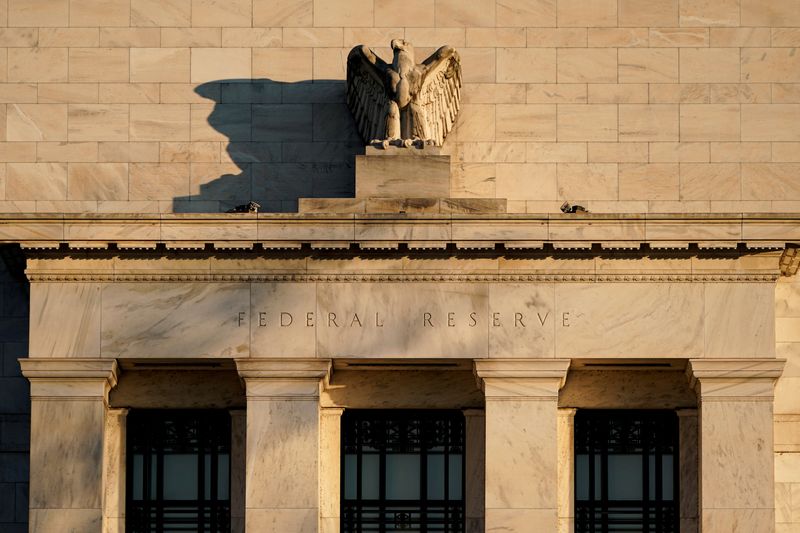By Karen Brettell
(Reuters) - The closely watched two-year/10-year part of the U.S. Treasury yield curve briefly inverted on Tuesday, which in the past has indicated that a recession could start in one to two years.
Other parts of the yield curve, however, including one of the Federal Reserve’s favorite recession indicators - the gap between three-month and 10-year yields - have been steepening and remain a long way from inversion.
Here is a roundup of what some market participants think about the yield curve.
GOLDMAN SACHS STRATEGISTS, LED BY PRAVEEN KORAPATY
“The nominal curve tends to invert more easily in a high inflation environment, and we could see earlier and/or deeper curve inversions this cycle. In such an environment, a deeper nominal curve inversion may be needed to produce the same recession odds in models as seen in more recent business cycles.”
ERIN BROWNE, PORTFOLIO MANAGER, MULTI-ASSET STRATEGIES, PIMCO
"Historically in very high inflationary environments, like we are in today...looking at real yields and the real yield curve is a better indicator of growth risks. The real yield is still very steep."
"The extraordinary amount of QE has lowered term premiums and worsened the flatness of the curve. As a result, this is a very different cycle."
JPMORGAN STRATEGISTS, LED BY MARKO KOLANOVIC
“The flat/inverted yield curve was historically a good cycle signal because it would indicate that financing conditions have become highly restrictive, but we do not see this at present. Real rates averaged +200bp at the time of past curve inversions, vs current negative levels, while bank lending standards are still easing.”
BRUNO BRAIZINHA, INTEREST RATE STRATEGIST, BANK OF AMERICA
“The recent 2s10s curve dynamics reflect recession risks.”
“Inversions are a significant mile-marker for late-cycle transitions, with implications for expected returns and covariances across asset classes. Scope for a more hawkish Fed near term likely exacerbates medium-term risks to the outlook.”
JONATHAN COHN, RATES TRADING STRATEGIST, CREDIT SUISSE
“2s10s...may not be as strong or worrisome of an indicator in the current environment as it has been historically given much of the “weight” on the long-end reflects compressed term premia as opposed to inherent “overtightening” expectations. Nevertheless… it is sensible to price a higher recession probability particularly now that the Fed has gestured toward its higher tolerance for economic weakness in exchange for price stability.”
JIM REID, HEAD OF THEMATIC RESEARCH, DEUTSCHE BANK
“The Fed have long preferred measures like the spread between the 18m forward 3m yield and the 3m yield….The biggest implication of this is perhaps that the Fed won’t see a 2s10s inversion as a reason to slow down rate hikes.”
“I still prefer 2s10s as a lead indicator since we can go back with a successful track record over far more cycles than the Fed’s preferred measure but it’s fair to say the record difference between the measures is now stark and worth debating.”
ANSHUL PRADHAN AND SAMUEL EARL, INTEREST RATE STRATEGISTS, BARCLAYS
“On the surface, a downward-sloping yield curve simply points to expectations of rate cuts by investors and does not indicate why. Investors might be worried about a recession and expect the Fed to cut rates. Alternatively, they could be expecting the Fed to cut rates in response to falling inflation. Both are plausible explanations, though history suggests the former is more likely.”
“Is this time different? We find the usual explanation of low term premium, due to factors such as the Fed's balance sheet, unsatisfactory...Investors are willing to accept a low term premium when they are worried about downside risks to growth, suggesting that the term premium also contains information about the outlook.”
WELLS FARGO MACRO STRATEGISTS, LED BY MIKE SCHUMACHER

“The link between curve shape and growth has been weak at best since 2009."
“Why has the yield curve lost its mojo? Heavy bond buying by central banks has caused long-term yields to diverge from economic fundamentals.”